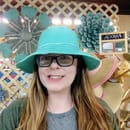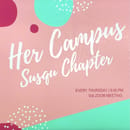STEM – Science, Technology, Engineering and Math – is a nationwide program to increase the interest of youth in scientific careers. While this program has inspired plenty of kids, it also has overtaken school curriculums. When I was attending high school, a math exam was postponed to accommodate a STEM program day. While I could understand this program taking the place of a math class, STEM day was hardly enjoyable for me.
It was one big popularity contest. The program consisted of using legos, Lincoln Logs and Q-tips to build a make-believe infrastructure. As someone who is a klutz and has a learning disability, this activity was inconceivable to me. I couldn’t understand how the pieces went together. I’ve never been dexterous, and all the program did was show me how little I was capable of. I tried to stay positive and I asked for help from one of the STEM instructors. She delivered a sappy smile my way and just told me to “give it another try.”
This made my blood boil over. I was sure all my classmates could see my embarrassed face. Instead of helping me, the instructor had abandoned me to shark-infested waters. The rest of the day went much the same way. No STEM instructors gave me any concrete hints or even suggestions. The message was clear: you either know how to do it or you don’t. Another program consisted of forming a team and planning your life as adults. Believe it or not, it wasn’t fun to talk to people I didn’t know about how many kids I want to have or houses I want to own. I’m not ashamed to admit I participated in a numb state. I made random choices and set a timer on my watch to count down to the end of the school day. This was my first impression of STEM.
Despite my rocky introduction to STEM, I have come to respect how it has boosted young girls’ interest in the sciences. I’m all for women working in every field and industry. Women such as Katherine Johnson inspire the next generation of young girls. STEM programs celebrate her, Sally Ride, Melinda Gates, and other female role models. If a young girl is interested in being a scientist, engineer, astronaut, or anything else in the field, then role models are essential for them. I see statistics that report women don’t work in STEM as much as men do every day. Women don’t get enough opportunities in STEM fields, and fewer women are earning science degrees.
I apologize for being a negative statistic because I won’t be earning a Bachelor of Science degree. I’m proud to be pursuing a degree in the arts during a time when the United States couldn’t care less about artistic education. In our country’s eyes, STEM is more valuable. STEM is all the rage and that’s why STEM careers pay more. Just think that if it was the opposite and careers in the arts paid more, would parents encourage their children to have that kind of job? Is it just a matter of money?
I fully support women involved in STEM, but what about other women? The women who come home from an eight-hour job and sit down to work on the novel they dream of publishing. The women who spend hours emailing agents hoping to find representation in the publishing industry. The women who edit their manuscripts six, sometimes seven times over the course of years. The women who earn a barely livable wage, just waiting for writers to be famous again. These women may not be building robots and writing code, but they are creating imaginary worlds that will inspire generations of kids and adults alike.
Just like how inventors and computer programmers create technology in their minds, writers create their own worlds from the same place in their mind. It’s easy for people to forget. It’s easy to forget how much artists and writers have changed the world before all of us were alive. It’s not science alone that has advanced society. Everything we do involves art in some way.
I think about how important art is when I go to buy a new phone case, for example. This may seem a purely technological situation. However, when you look over the choices of phone cases, there is a wide selection. Not only is there red, yellow and blue, but various shades of green blues and magenta pinks. Without the achievements made by artists, color variations would not be available to us now. It took many artists to discover the colors that balance each other and how they can be blended. An artist helped make a phone case just as much as a manufacturer did. My high school would’ve never postponed a math exam to accommodate a visiting author. I know this because the one time an author did visit the school, she was scheduled for the end of the day when some of the kids had already left the school. There is a displacement in priorities where STEM is valued over all other education. The result is artistic students feeling lost. We have so much to contribute, but we have too few opportunities to do so. My writing skills have developed over time, but as of now, I still feel like a lost artist in this crazy scientific world.



